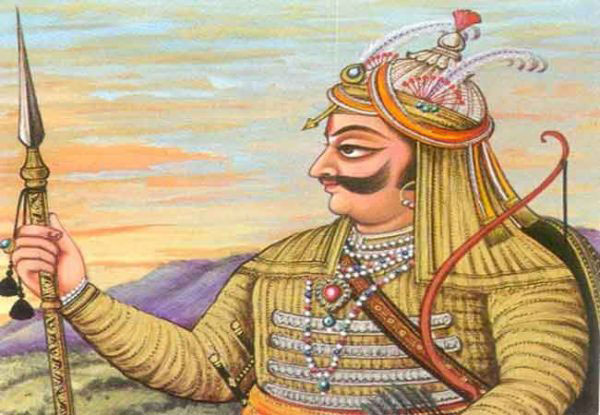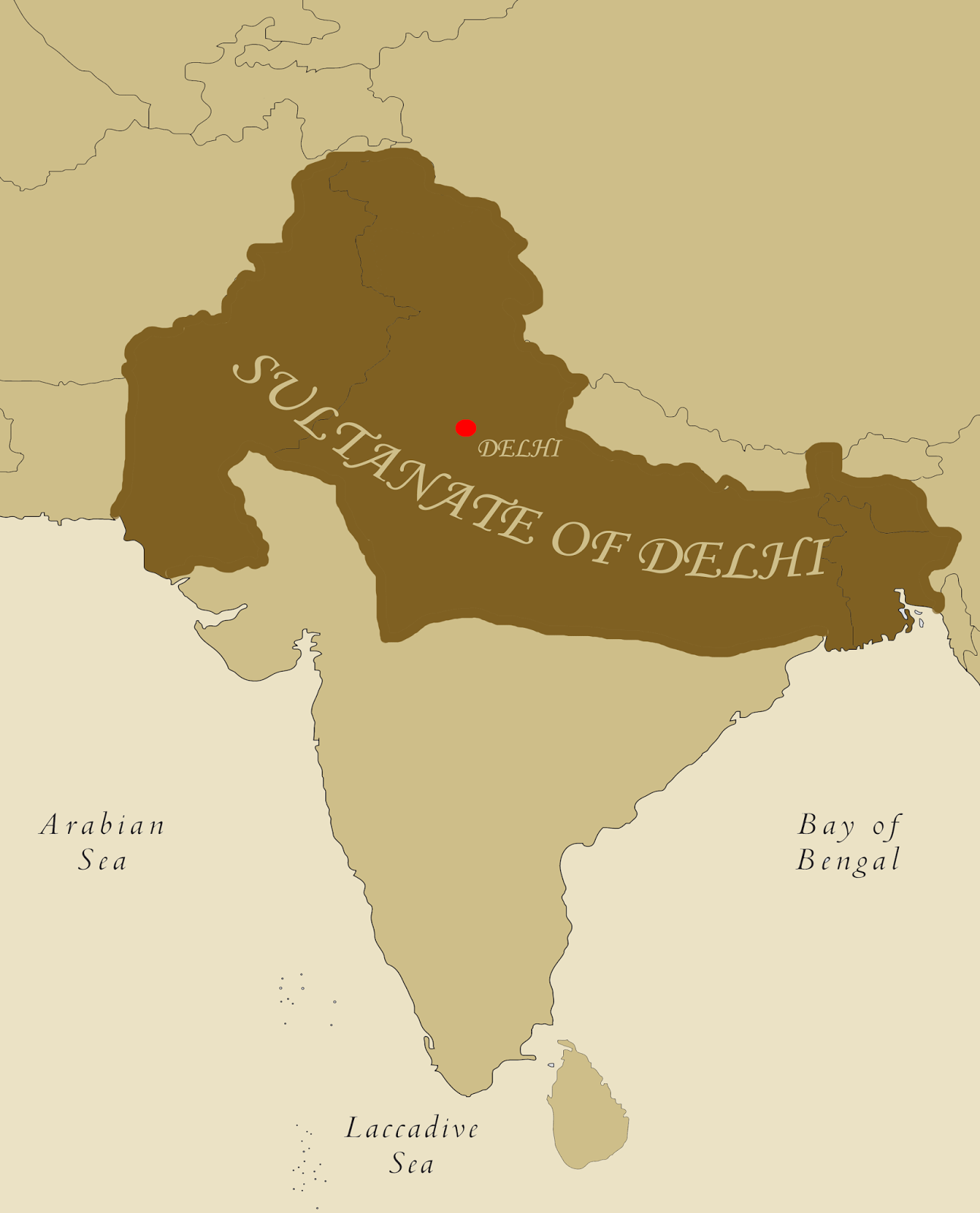Invasions by Mahmud of Ghazni and Muhammad Ghori into India ultimately resulted in the establishment of Turkish rule which is commonly known as Delhi Sultanate. Five different dynasties are collectively referred to as the Turkish rule or Delhi Sultanate, The Slave Dynasty, The Khalji Dynasty, The Tughlaq Dynasty, The Sayyid Dynasty, and The Lodhi Dynasty. This rule resulted in far-reaching changes in the Indian society, Administration, and cultural life.
Establishment of the Delhi Sultanate
Many factors lead to the rise of the Islamic ruling in India after multiple Islamic invasions. In this section, we will discuss a few of those factors responsible for the Establishment of the Delhi Sultanate.
Political Factors
The Rajput age in India (c.750 – 1200 CE) was worked by political fragmentation. There was no central authority in India during c.950 – 1200 CE. North India was completely fragmented politically. The absence of any dominant power in North India played an important role in the success of the Turks against Rajput.

The politically divided Indian states could be defeated one after the other by Turkish invaders easily. Lack of strategic consciousness among Indian rulers. The rulers of interiors failed to understand their responsibility towards the defense of the North-Western Frontier. They were busy with their own petty issues. The Hindu Shahi ruling over the Afghan – Pak region was left to be burnt due to the Turkish invasion and hadn’t received any support from other rulers.
Even if the support was provided then it was not in a full-fledged manner and only by a few rulers only. The Chauhans & Chandela supported Jaypala against Subuktigin. In c.1008 CE Anand Pala was supported by the rulers of Ujjain, Gwalior, Kalinga, Ajmer & Delhi against Mahmud of Ghazni but these half-hearted efforts failed to produce any desired outcome.
The inward-looking attitude of Indian Rulers also contributed to their defeat at the hands of the Turkish invaders. Hardly any contact was maintained by Indian Rulers with the outside world during the early medieval age. The feudal values were dominant that discouraged travel too far from areas. As a result of this outlook, the Indian ruler could not keep a close watch on the political and military developments going on in central Asia. They never assumed Ghaznavids or other Turkish Invaders as a threat to their sovereignty & when they actually posed threat and attacked them, and then they found themselves unprepared and helpless against these attacks.
The failure of Indian Rulers to learn from the mistakes of the past also doomed their fate. After the death of Mahmud of Ghazni, there was a period of silence for almost 150 years in the North-Western part of the Indian subcontinent but the Rajputs rulers failed to use this opportunity to strengthen themselves politically & military. These failures to learn from history ensured that they will have to face humiliating defeats at the hands of Turkish invaders.
The level of ignorance remained the same even in the late 12th century and that became the major reason for the defeat of Prithviraj Chauhan and other Rajputs rulers at the hands of Muhammad Ghori and their generals. The internal conflicts between Rajput rulers in India also continued greatly to these humiliating defeats. Among these conflicts, the contribution of the Tri-Partite struggle was most crucial of all.

During the late decades of the 8th century, the Tri-Partite struggle aroused and continued for the next then 150 years. This Tri-partite struggle involved three major dynasties of the Indian subcontinent – the Gurjar-Pratihara of Rajasthan, Palas of Bengal & Bihar, and Rashtrakuta of Deccan.
This struggle exhausted the political and military strength of India and also keep away their attention away from other activities related to foreign policy and lacked about the status of all activities of central Asia and possible threat aroused to Turkish and other invaders. This provides a possible vacuum for Turkish invaders to attack and establish themselves in Nothern India by defeating all small state armies separately.
Military Factors
The army of Rajputs was used to bulkier and numerically heavy compared to the Turkish army. The Turkish army was well composed, fast-moving, and highly-trained where Rajput’s armies were based feudal system was or wasn’t being able to provide composed, trained, and loyal soldiers. The Rajput military was feudal in its composition there was no central standing army. Only a small part of the Rajput army was maintained by the king under his direct command most of the army was raised & commanded by feudal lords their feudal lords used to bring their forces during wars.
This feudal army of Rajputs used to face of lack of coordination and proper communication among them as there were different commands for them from their feudal lords and their Rajput leader which results in the Rajputs failed to stand against the cohesively organized central standing army of Turks.
The feudal forces of Rajput rulers were loyal to their immediate commander, there was no loyalty among the soldiers towards their Rajput king as a result of this the soldiers used to run away from the battlefield in case of the death or the fleet of their commander. This was one fundamental weakness. On the other hand, most Turkish soldiers were the slaves of the Sultan & they used to fight for their commander till the last breath.
The nature of warfare of Rajput was also faulty the Rajput fought defensive battles at a time when great offense was required. The Rajput relied more on the Elephant force than the Cavalry force. The Elephants served Indian rulers to remarkable success for more than 1500 years but by the 10th century, these elephants were more of a liability. The Turks used to terrify the elephants by throwing fireballs & making loud noise due to which Indian elephants used to crush their own soldiers.
The elephant lacked mobility aspect as a result of which the Rajput would neither attack their enemy suddenly nor could retreat swiftly on a bad day whereas Turks army was composed of fast-moving cavalry which easily destroyed the Elephants forces quite easily.
The movement of Rajput army units was very bulky due to the presence of highly non-competent peoples (in terms of military aspects). Along with the Rajput army unit a large number of servants, families of Royals, and other Feudal leaders used to move to battlefields that result in the slow movement of units. The weapon systems of Turk’s were of superior quality to then the Rajput counterparts. The Turks used a superior Persian bow known as Navak. The Turkish archers could shoot from a longer distance with much greater accuracy.
The Turk’s used iron stirrup (footrest) whereas Rajput was using Rope stirrup, as a result of this the Turkish cavalryman was far more stable on their horseback & they would target the enemy even though the horse is moving. The saddle (Raqqab) of Turk’s was far superior to that of Rajput because of which the Turk’s could have better control over the movements of their horse.
The Turkish cavalryman used the Iron Horse Shoe (Naal). Though Naal was known to Indians it was not used by them. Because of the Iron horseshoe, the Turkish horses could move swiftly even in Terrainains without injuring their feet this was not possible for Rajput.
Cultural Outlooks/Ideals & Values

The Rajput used to follows war-ethics and are of high ethical values. This ethics and morality designed them as weak opponents in front of Turkish Invaders. Moral and Ethics were more important for Rajput than the outcome of battle they believed in the Idea of Dharmayudha (Ethical Warfare). Whereas Turkish leaders’ only concern was their victory at any cost.
The Rajput used to warn their enemy before attacking them as a result of this they could not use the weapon of the surprise attack. The Rajput used to follow the principles of Dawn to Dust. They never attack their enemy before the sunrise and after the sunset. On the other hand, the Turk’s attacked their enemy when chances of victory were highest. Choosing/retreating the enemy was considered below prestige killing. A surrendered enemy was also shaming for Rajput as a result of this the enemies of Rajput use to get a second chance but the Turks committed no such mistake.
Attacking the enemy on the back was also considered below prestige. Surrendering on the battlefield was a matter of great shame in battle as a result of this the Rajput couldn’t use surrender as the battle strategy they had to fought all out in one go & got no second opportunity.
Social Factors
The fight between Turks & Rajput was not justified to be said between two military forces. In reality, it was a struggle between two socio-cultural systems. The Rajput society was in a degenerated state. It was marred by multiple evil practices that were clearly visible in Rajput society.
Evil practices like the caste system & untouchability were dominant. The Islamic Society of Turks was based on the principle of equality. Incrementally social practices were against. The Turkish Sultan could eat food from the same plate as most ordinary soldiers.
Religious Factors
Islam also played an important role in the success of Turk’s against Rajputs. The concept of Jehad was used by Turkish Rulers to motivate their soldiers to fight against much stronger Indian enemies 1000’s miles away from their home. The Ghazi spirit also motivated Turkish soldiers to fight against Rajput. The Indian Religion failed to provide similar motivation to Indian soldiers.
Economic Factors
During the early Medieval Age, the situation of the economic dictionary prevailed in India while the ruler was having limited resources because of the agriculturally dominated economy. The Indian Temples were world-famous for their wealth.
The limited resources with the king didn’t allow them to maintain a large army the richness of temples motivated the Turk’s to invade India repeatedly these economic factors had also blended Indian response to Turkish Invaders.

